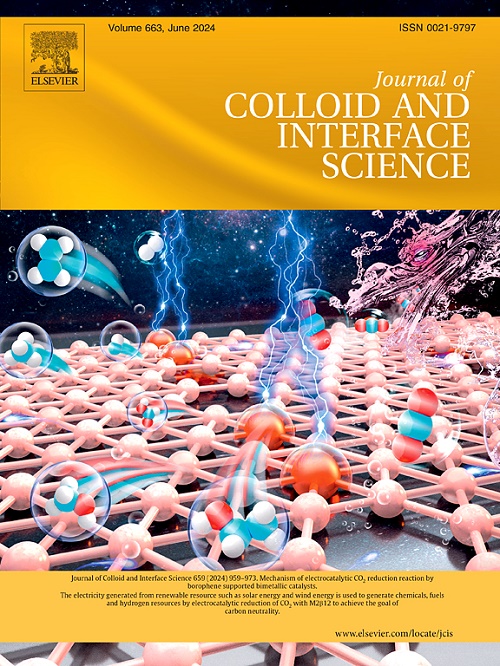在泡沫镍铁基体上设计和合成自生长NiFe双金属磷化物催化剂,用于高效的整体水分解。
IF 9.7
1区 化学
Q1 CHEMISTRY, PHYSICAL
引用次数: 0
摘要
低成本、高活性、稳定的电催化剂的设计是推进水电解技术的关键。在本研究中,羰基铁粉(CIP)通过电镀镍被锚定在泡沫镍(NF)的孔隙中,形成泡沫铁镍(NFF-L)底物。随后,采用自生长策略在NFF-L衬底上合成了氢氧化镍铁(NiFe- oh),然后进行磷化处理,产生了纳米花状NiFe双金属磷化物异质结构催化剂(Fe2P-Ni2P@NFF-L)。这种新型的衬底填充方法提高了空间利用率,同时纳米片表面微孔和介孔的存在促进了电解质的渗透和离子的扩散,从而显著增加了比表面积。两相异质界面的形成加速了电子的传递和转移,增强了水的解离和氢原子(Had)的吸附。此外,在阳极氧化条件下,动态表面重构促进了高活性的β-NiOOH和α-FeOOH相之间的协同作用,这显著促进了催化剂在析氧反应(OER)中的特殊内在活性。本文章由计算机程序翻译,如有差异,请以英文原文为准。

Design and synthesis of autogenous growth NiFe bimetallic phosphide catalysts on a nickel iron foam-like substrate for efficient overall water splitting
The design of low-cost, highly active, and stable electrocatalysts is pivotal for advancing water electrolysis technologies. In this study, carbonyl iron powder (CIP) was anchored within the pores of nickel foam (NF) by electroplating nickel, creating nickel iron foam-like (NFF-L) substrates. Subsequently, nickel–iron hydroxide (NiFe-OH) was synthesized on the NFF-L substrate employing an autogenous growth strategy, followed by a phosphating treatment that produced a nanoflower-like NiFe bimetallic phosphide heterostructure catalyst (Fe2P-Ni2P@NFF-L). This novel method of substrate filling enhanced space utilization, while the presence of micropores and mesopores on the nanosheet surfaces facilitated electrolyte infiltration and ion diffusion, thereby significantly increasing the specific surface area. The formation of a two-phase heterointerface accelerated electron transmission and transfer, enhancing water dissociation and the adsorption of hydrogen adatoms (Had). In addition, under anodic oxidation conditions, the dynamic surface reconstruction facilitated a synergistic interaction between the highly active β-NiOOH and α-FeOOH phases, which significantly contributed to the catalyst’s exceptional intrinsic activity for the oxygen evolution reaction (OER).
求助全文
通过发布文献求助,成功后即可免费获取论文全文。
去求助
来源期刊
CiteScore
16.10
自引率
7.10%
发文量
2568
审稿时长
2 months
期刊介绍:
The Journal of Colloid and Interface Science publishes original research findings on the fundamental principles of colloid and interface science, as well as innovative applications in various fields. The criteria for publication include impact, quality, novelty, and originality.
Emphasis:
The journal emphasizes fundamental scientific innovation within the following categories:
A.Colloidal Materials and Nanomaterials
B.Soft Colloidal and Self-Assembly Systems
C.Adsorption, Catalysis, and Electrochemistry
D.Interfacial Processes, Capillarity, and Wetting
E.Biomaterials and Nanomedicine
F.Energy Conversion and Storage, and Environmental Technologies

 求助内容:
求助内容: 应助结果提醒方式:
应助结果提醒方式:


